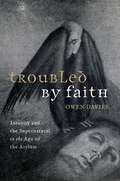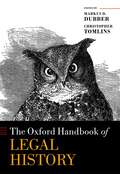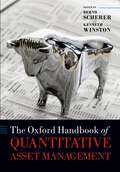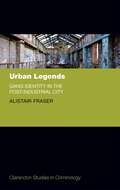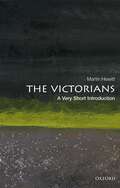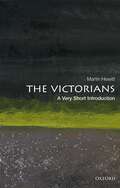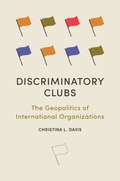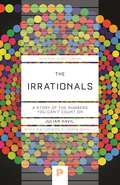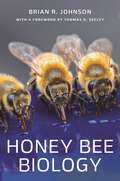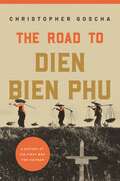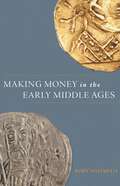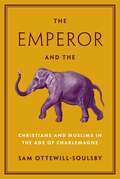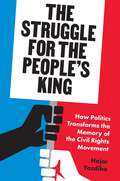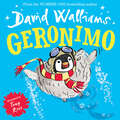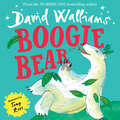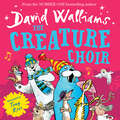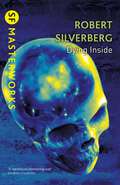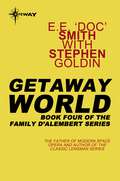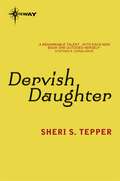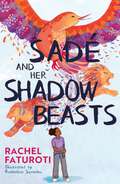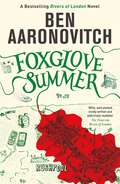- Table View
- List View
Troubled by Faith: Insanity and the Supernatural in the Age of the Asylum
by Prof Owen DaviesThe nineteenth century was a time of extraordinary scientific innovation, but with the rise of psychiatry, faiths and popular beliefs were often seen as signs of a diseased mind. By exploring the beliefs of asylum patients, we see the nineteenth century in a new light, with science, faith, and the supernatural deeply entangled in a fast-changing world. The birth of psychiatry in the early nineteenth-century fundamentally changed how madness was categorised and understood. A century on, their conceptions of mental illness continue to influence our views today. Beliefs and behaviour were divided up into the pathological and the healthy. The influence of religion and the supernatural became significant measures of insanity in individuals, countries, and cultures. Psychiatrists not only thought they could transform society in the industrial age but also explain the many strange beliefs expressed in the distant past. Troubled by Faith explores these ideas about the supernatural across society through the prism of medical history. It is a story of how people continued to make sense of the world in supernatural terms, and how belief came to be a medical issue. This cannot be done without exploring the lives of those who found themselves in asylums because of their belief in ghosts, witches, angels, devils, and fairies, or because they though themselves in divine communication, or were haunted by modern technology. The beliefs expressed by asylum patients were not just an expression of their individual mental health, but also provide a unique reflection of society at the time - a world still steeped in the ideas and imagery of folklore and faith in a fast-changing world.
The Oxford Handbook of Legal History (Oxford Handbooks)
Some of the most exciting and innovative legal scholarship has been driven by historical curiosity. Legal history today comes in a fascinating array of shapes and sizes, from microhistory to global intellectual history. Legal history has expanded beyond traditional parochial boundaries to become increasingly international and comparative in scope and orientation. Drawing on scholarship from around the world, and representing a variety of methodological approaches, areas of expertise, and research agendas, this timely compendium takes stock of legal history and methodology and reflects on the various modes of the historical analysis of law, past, present, and future. Part I explores the relationship between legal history and other disciplinary perspectives including economic, philosophical, comparative, literary, and rhetorical analysis of law. Part II considers various approaches to legal history, including legal history as doctrinal, intellectual, or social history. Part III focuses on the interrelation between legal history and jurisprudence by investigating the role and conception of historical inquiry in various models, schools, and movements of legal thought. Part IV traces the place and pursuit of historical analysis in various legal systems and traditions across time, cultures, and space. Finally, Part V narrows the Handbooks focus to explore several examples of legal history in action, including its use in various legal doctrinal contexts.
The Oxford Handbook of Quantitative Asset Management (Oxford Handbooks)
by Bernd, Scherer; Kenneth, WinstonQuantitative portfolio management has become a highly specialized discipline. Computing power and software improvements have advanced the field to a level that would not have been thinkable when Harry Markowitz began the modern era of quantitative portfolio management in 1952. In addition to raw computing power, major advances in financial economics and econometrics have shaped academia and the financial industry over the last 60 years. While the idea of a general theory of finance is still only a distant hope, asset managers now have tools in the financial engineering kit that address specific problems in their industry. The Oxford Handbook of Quantitative Asset Management consists of seven sections that explore major themes in current theoretical and practical use. These themes span all aspects of a modern quantitative investment organization. Contributions from academics and practitioners working in leading investment management organizations bring together the key theoretical and practical aspects of the field to provide a comprehensive overview of the major developments in the area.
A Dictionary of Weights, Measures, and Units (Oxford Quick Reference)
by Donald FennaThis comprehensive and authoritative dictionary provides clear definitions of units, prefixes, and styles of weights and measures within the Système International (SI), as well as traditional, and industry-specific units. It also includes general historical and scientific background, covering the development of the sequential definitions and sizing of units. This new reference work will prove invaluable to professional scientists, engineers, technicians as well as to students and the general user. · Over 1,600 clear and concise entries complete with historical background · Covers a broad range of disciplines, including astronomy, electromagnetics, geology, photography, mathematics, meteorology, physics, and temperature · Notes on associated terminology · Numerous tables, including the geochronologic scale and the equation of time · Comprehensive coverage of the whole Système International
Urban Legends: Gang Identity in the Post-Industrial City (Clarendon Studies in Criminology)
by Alistair FraserAs the youth gang phenomenon becomes an important and sensitive public issue, communities from Los Angeles to Rio, Cape Town to London are facing the reality of what such violent groups mean for their children and young people. Complex dangers and instabilities, as well as high levels of public fear and anger, fuel an amplification of anxious public and political rhetoric in relation to gangs, in which the stereotype of the American street-gang - a ruthless, hierarchical, street-based criminal organisation capable of corrupting youth and fracturing communities - looms large. Set against this backdrop, Urban Legends: Gang Identity in the Post-Industrial City tells a unique and powerful story of young people, gang identity, and social change in post-industrial Glasgow, challenging the perceptions of gangs as a novel, universal, or pathological phenomenon. Though territorial gangs have been reported in Glasgow for over a century, with striking continuities over this time, there are similarities with street-based groups elsewhere. Using this similarity as the foundation, the book goes on to argue that Glaswegian gangs have a specific historical trajectory that is particular to the city. Drawing on four years of varied ethnographic fieldwork in Langview, a deindustrialised working-class community, the book spotlights the everyday experiences and understandings of gangs for young people growing up in the area, reasoning that - for some - gang identification represents a root of identity and a route to masculinity, in a post-industrial city that has little space for them.
The Oxford Handbook of Quantitative Asset Management (Oxford Handbooks)
Quantitative portfolio management has become a highly specialized discipline. Computing power and software improvements have advanced the field to a level that would not have been thinkable when Harry Markowitz began the modern era of quantitative portfolio management in 1952. In addition to raw computing power, major advances in financial economics and econometrics have shaped academia and the financial industry over the last 60 years. While the idea of a general theory of finance is still only a distant hope, asset managers now have tools in the financial engineering kit that address specific problems in their industry. The Oxford Handbook of Quantitative Asset Management consists of seven sections that explore major themes in current theoretical and practical use. These themes span all aspects of a modern quantitative investment organization. Contributions from academics and practitioners working in leading investment management organizations bring together the key theoretical and practical aspects of the field to provide a comprehensive overview of the major developments in the area.
The Victorians: A Very Short Introduction (Very Short Introductions)
by Professor Martin HewittVery Short Introductions: Brilliant, Sharp, Inspiring The Victorian period may have come to an end over 120 years ago, but the Victorians continue to be a vital presence in the modern world. Contemporary Britain is still in large part Victorian in its transport networks, sewage systems, streets, and houses. Victorian cultural legacies, especially in art, science, and literature, are still celebrated. The first to have to grapple with many of the challenges of modern urban society, we continue to look to the Victorians for inspiration and solace. And we are increasingly aware of the ways their global actions shaped, often for ill, the world around us. Much mythologised, inexhaustibly controversial, the Victorians are an inescapable reference point for understanding the modern histories not just of Britain and its empire, but of the world. In The Victorians: A Very Short Introduction Martin Hewitt offers a guide through the thickets of judgement and debate which have grown around the period and its people, to offer a historical overview of the Victorians and their legacies. He seeks to answer five crucial questions. Why have the Victorians continued occupy such a prominent place in the cultures of not just the anglophone world? How far does it make sense to think of a 64-year period arbitrarily given an identity by the longevity of the Queen as an identifiable historical period in a general sense? How justified are the value-laden versions of the Victorians which argue for the existence of a particular world view called 'Victorianism'? Beyond ideology, what was Victorian Britain actually like – and in particular, what was distinctive about it? Who were the Victorians – not just the eminent few, but the population as a whole? And finally, how far and with what results did the Victorians and their culture spread across the globe? In answering these questions, Hewitt cautions against some long-held orthodoxies, throws a light on some less well-known aspects of the period, and urges the importance of understanding the Victorians on their own terms if we are to effectively engage with their legacies. ABOUT THE SERIES: The Very Short Introductions series from Oxford University Press contains hundreds of titles in almost every subject area. These pocket-sized books are the perfect way to get ahead in a new subject quickly. Our expert authors combine facts, analysis, perspective, new ideas, and enthusiasm to make interesting and challenging topics highly readable.
The Oxford Handbook of Legal History (Oxford Handbooks)
by Markus D. Dubber and Christopher TomlinsSome of the most exciting and innovative legal scholarship has been driven by historical curiosity. Legal history today comes in a fascinating array of shapes and sizes, from microhistory to global intellectual history. Legal history has expanded beyond traditional parochial boundaries to become increasingly international and comparative in scope and orientation. Drawing on scholarship from around the world, and representing a variety of methodological approaches, areas of expertise, and research agendas, this timely compendium takes stock of legal history and methodology and reflects on the various modes of the historical analysis of law, past, present, and future. Part I explores the relationship between legal history and other disciplinary perspectives including economic, philosophical, comparative, literary, and rhetorical analysis of law. Part II considers various approaches to legal history, including legal history as doctrinal, intellectual, or social history. Part III focuses on the interrelation between legal history and jurisprudence by investigating the role and conception of historical inquiry in various models, schools, and movements of legal thought. Part IV traces the place and pursuit of historical analysis in various legal systems and traditions across time, cultures, and space. Finally, Part V narrows the Handbooks focus to explore several examples of legal history in action, including its use in various legal doctrinal contexts.
The Victorians: A Very Short Introduction (Very Short Introductions)
by Professor Martin HewittVery Short Introductions: Brilliant, Sharp, Inspiring The Victorian period may have come to an end over 120 years ago, but the Victorians continue to be a vital presence in the modern world. Contemporary Britain is still in large part Victorian in its transport networks, sewage systems, streets, and houses. Victorian cultural legacies, especially in art, science, and literature, are still celebrated. The first to have to grapple with many of the challenges of modern urban society, we continue to look to the Victorians for inspiration and solace. And we are increasingly aware of the ways their global actions shaped, often for ill, the world around us. Much mythologised, inexhaustibly controversial, the Victorians are an inescapable reference point for understanding the modern histories not just of Britain and its empire, but of the world. In The Victorians: A Very Short Introduction Martin Hewitt offers a guide through the thickets of judgement and debate which have grown around the period and its people, to offer a historical overview of the Victorians and their legacies. He seeks to answer five crucial questions. Why have the Victorians continued occupy such a prominent place in the cultures of not just the anglophone world? How far does it make sense to think of a 64-year period arbitrarily given an identity by the longevity of the Queen as an identifiable historical period in a general sense? How justified are the value-laden versions of the Victorians which argue for the existence of a particular world view called 'Victorianism'? Beyond ideology, what was Victorian Britain actually like – and in particular, what was distinctive about it? Who were the Victorians – not just the eminent few, but the population as a whole? And finally, how far and with what results did the Victorians and their culture spread across the globe? In answering these questions, Hewitt cautions against some long-held orthodoxies, throws a light on some less well-known aspects of the period, and urges the importance of understanding the Victorians on their own terms if we are to effectively engage with their legacies. ABOUT THE SERIES: The Very Short Introductions series from Oxford University Press contains hundreds of titles in almost every subject area. These pocket-sized books are the perfect way to get ahead in a new subject quickly. Our expert authors combine facts, analysis, perspective, new ideas, and enthusiasm to make interesting and challenging topics highly readable.
Urban Legends: Gang Identity in the Post-Industrial City (Clarendon Studies in Criminology)
by Alistair FraserAs the youth gang phenomenon becomes an important and sensitive public issue, communities from Los Angeles to Rio, Cape Town to London are facing the reality of what such violent groups mean for their children and young people. Complex dangers and instabilities, as well as high levels of public fear and anger, fuel an amplification of anxious public and political rhetoric in relation to gangs, in which the stereotype of the American street-gang - a ruthless, hierarchical, street-based criminal organisation capable of corrupting youth and fracturing communities - looms large. Set against this backdrop, Urban Legends: Gang Identity in the Post-Industrial City tells a unique and powerful story of young people, gang identity, and social change in post-industrial Glasgow, challenging the perceptions of gangs as a novel, universal, or pathological phenomenon. Though territorial gangs have been reported in Glasgow for over a century, with striking continuities over this time, there are similarities with street-based groups elsewhere. Using this similarity as the foundation, the book goes on to argue that Glaswegian gangs have a specific historical trajectory that is particular to the city. Drawing on four years of varied ethnographic fieldwork in Langview, a deindustrialised working-class community, the book spotlights the everyday experiences and understandings of gangs for young people growing up in the area, reasoning that - for some - gang identification represents a root of identity and a route to masculinity, in a post-industrial city that has little space for them.
Discriminatory Clubs: The Geopolitics of International Organizations
by Christina L. DavisThe discriminatory logic at the heart of multilateralismMember selection is one of the defining elements of social organization, imposing categories on who we are and what we do. Discriminatory Clubs shows how international organizations are like social clubs, ones in which institutional rules and informal practices enable states to favor friends while excluding rivals.Where race or socioeconomic status may be a basis for discrimination by social clubs, geopolitical alignment determines who gets into the room to make the rules of global governance. Christina Davis brings together a wealth of data on membership provisions for more than three hundred organizations to reveal the prevalence of club-style selection on the world stage. States join organizations to deepen their association with a particular group of states—most often their allies—and for the gains from policy coordination. Even organizations that claim to be universal, to target narrow issues, or to cover geographic regions use club-style admission criteria. Davis demonstrates that when it comes to the most important decision of cooperation—who belongs to the club and who doesn’t—geopolitical alignment can matter more than the merits or policies of potential members.With illuminating case studies ranging from nineteenth-century Japan to contemporary Palestine and Taiwan, Discriminatory Clubs sheds light on how, for global and regional organizations such as the WTO and the EU, alliance ties and shared foreign-policy positions form the basis of cooperation.
The Irrationals: A Story of the Numbers You Can't Count On (Princeton Science Library #134)
by Julian HavilAn entertaining and enlightening history of irrational numbers, from ancient Greece to the twenty-first centuryThe ancient Greeks discovered them, but it wasn't until the nineteenth century that irrational numbers were properly understood and rigorously defined, and even today not all their mysteries have been revealed. In The Irrationals, the first popular and comprehensive book on the subject, Julian Havil tells the story of irrational numbers and the mathematicians who have tackled their challenges, from antiquity to the twenty-first century. Along the way, he explains why irrational numbers are surprisingly difficult to define—and why so many questions still surround them. Fascinating and illuminating, this is a book for everyone who loves math and the history behind it.
Honey Bee Biology
by Brian R. JohnsonThe most comprehensive and up-to-date general reference book on honey bee biologyHoney bees are marvelously charismatic organisms with a long history of interaction with humans. They are vital to agriculture and serve as a model system for many basic questions in biology. This authoritative book provides an essential overview of honey bee biology, bringing established topics up to date while incorporating emerging areas of inquiry.Honey Bee Biology covers everything from molecular genetics, development, and physiology to neurobiology, behavior, and pollination biology. Placing special attention on the important role of bees as pollinators in agricultural ecosystems, it incorporates the latest findings on pesticides, parasites, and pathogens. This incisive and wide-ranging book also sheds vital light on the possible causes of colony collapse disorder and the devastating honey bee losses we are witnessing today.The study of honey bees has greatly expanded in recent years and there is more interest in these marvelous creatures than ever before. Honey Bee Biology is the first up-to-date general reference of its kind published in decades. It is a must-have resource for social insect biologists, scientifically savvy beekeepers, and any scientist interested in bees as a model system.
The Road to Dien Bien Phu: A History of the First War for Vietnam
by Christopher GoschaA multifaceted history of Ho Chi Minh’s climactic victory over French colonial might that foreshadowed America’s experience in VietnamOn May 7, 1954, when the bullets stopped and the air stilled in Dien Bien Phu, there was no doubt that Vietnam could fight a mighty colonial power and win. After nearly a decade of struggle, a nation forged in the crucible of war had achieved a victory undreamed of by any other national liberation movement. The Road to Dien Bien Phu tells the story of how Ho Chi Minh turned a ragtag guerrilla army into a modern fighting force capable of bringing down the formidable French army.Taking readers from the outbreak of fighting in 1945 to the epic battle at Dien Bien Phu, Christopher Goscha shows how Ho transformed Vietnam from a decentralized guerrilla state based in the countryside to a single-party communist state shaped by a specific form of “War Communism.” Goscha discusses how the Vietnamese operated both states through economics, trade, policing, information gathering, and communications technology. He challenges the wisdom of counterinsurgency methods developed by the French and still used by the Americans today, and explains why the First Indochina War was arguably the most brutal war of decolonization in the twentieth century, killing a million Vietnamese, most of them civilians.Panoramic in scope, The Road to Dien Bien Phu transforms our understanding of this conflict and the one the United States would later enter, and sheds new light on communist warfare and statecraft in East Asia today.
Making Money in the Early Middle Ages
by Rory NaismithAn examination of coined money and its significance to rulers, aristocrats and peasants in early medieval EuropeBetween the end of the Roman Empire in the fifth century and the economic transformations of the twelfth, coined money in western Europe was scarce and high in value, difficult for the majority of the population to make use of. And yet, as Rory Naismith shows in this illuminating study, coined money was made and used throughout early medieval Europe. It was, he argues, a powerful tool for articulating people’s place in economic and social structures and an important gauge for levels of economic complexity. Working from the premise that using coined money carried special significance when there was less of it around, Naismith uses detailed case studies from the Mediterranean and northern Europe to propose a new reading of early medieval money as a point of contact between economic, social, and institutional history.Naismith examines structural issues, including the mining and circulation of metal and the use of bullion and other commodities as money, and then offers a chronological account of monetary development, discussing the post-Roman period of gold coinage, the rise of the silver penny in the seventh century and the reconfiguration of elite power in relation to coinage in the tenth and eleventh centuries. In the process, he counters the conventional view of early medieval currency as the domain only of elite gift-givers and intrepid long-distance traders. Even when there were few coins in circulation, Naismith argues, the ways they were used—to give gifts, to pay rents, to spend at markets—have much to tell us.
The Emperor and the Elephant: Christians and Muslims in the Age of Charlemagne
by Sam Ottewill-SoulsbyA new history of Christian-Muslim relations in the Carolingian period that provides a fresh account of events by drawing on Arabic as well as western sourcesIn the year 802, an elephant arrived at the court of the Emperor Charlemagne in Aachen, sent as a gift by the ʿAbbasid Caliph, Harun al-Rashid. This extraordinary moment was part of a much wider set of diplomatic relations between the Carolingian dynasty and the Islamic world, including not only the Caliphate in the east but also Umayyad al-Andalus, North Africa, the Muslim lords of Italy and a varied cast of warlords, pirates and renegades. The Emperor and the Elephant offers a new account of these relations. By drawing on Arabic sources that help explain how and why Muslim rulers engaged with Charlemagne and his family, Sam Ottewill-Soulsby provides a fresh perspective on a subject that has until now been dominated by and seen through western sources.The Emperor and the Elephant demonstrates the fundamental importance of these diplomatic relations to everyone involved. Charlemagne and Harun al-Rashid’s imperial ambitions at home were shaped by their dealings abroad. Populated by canny border lords who lived in multiple worlds, the long and shifting frontier between al-Andalus and the Franks presented both powers with opportunities and dangers, which their diplomats sought to manage.Tracking the movement of envoys and messengers across the Pyrenees, the Mediterranean and beyond, and the complex ideas that lay behind them, this book examines the ways in which Christians and Muslims could make common cause in an age of faith.
The Struggle for the People’s King: How Politics Transforms the Memory of the Civil Rights Movement
by Hajar YazdihaHow the misuses of Martin Luther King’s legacy divide us and undermine democracyIn the post–civil rights era, wide-ranging groups have made civil rights claims that echo those made by Black civil rights activists of the 1960s, from people with disabilities to women’s rights activists and LGBTQ coalitions. Increasingly since the 1980s, white, right-wing social movements, from family values coalitions to the alt-right, now claim the collective memory of civil rights to portray themselves as the newly oppressed minorities. The Struggle for the People’s King reveals how, as these powerful groups remake collective memory toward competing political ends, they generate offshoots of remembrance that distort history and threaten the very foundations of multicultural democracy.In the revisionist memories of white conservatives, gun rights activists are the new Rosa Parks, antiabortion activists are freedom riders, and antigay groups are the defenders of Martin Luther King’s Christian vision. Drawing on a wealth of evidence ranging from newspaper articles and organizational documents to television transcripts, press releases, and focus groups, Hajar Yazdiha documents the consequential reimagining of the civil rights movement in American political culture from 1980 to today. She shows how the public memory of King and civil rights has transformed into a vacated, sanitized collective memory that evades social reality and perpetuates racial inequality.Powerful and persuasive, The Struggle for the People’s King demonstrates that these oppositional uses of memory fracture our collective understanding of who we are, how we got here, and where we go next.
Geronimo: The Penguin Who Thought He Could Fly!
by David WalliamsThe brand-new HEARTWARMINGLY HILARIOUS children’s picture book from NUMBER ONE bestselling David Walliams. Illustrated by artistic genius Tony Ross.
Boogie Bear
by David WalliamsFrom Number One bestselling author David Walliams comes a hilarious and heartwarming picture book, brilliantly illustrated by the artistic genius, Tony Ross.
The Creature Choir
by David WalliamsSing your heart out this Christmas with a whole choir of characters, in the showstopping new picture book from number one bestselling author David Walliams, illustrated by the artistic genius, Tony Ross!
Dying Inside (S.F. MASTERWORKS #No.60)
by Robert SilverbergBorn with the extraordinary power to look deep within the human heart, David Selig recklessly misuses his gift in the pursuit of pleasure, until his power begins to die and he must come to terms with what it means to be truly human. This is a fascinating portrait. Never has the experience of telepathy been conveyed so vividly, so excitingly, so chillingly. And never has Silverberg created so moving a story, as he depicts the flux of dying and thrust towards rebirth.
Getaway World: Family d'Alembert Book 4 (Family d'Alembert #4)
by Stephen Goldin E.E. 'Doc' SmithHelena, second in command of the Empire Of Earth's security forces (and daughter of its head), has disappeared. She knows the identity of SOTE's two most highly trained operators and their lives are now in danger . . . they have to find her before she can reveal their identities.Getaway World is the fourth book in the Family d'Alembert series.
Dervish Daughter
by Sheri S. TepperI am called Jinian Footseer by some. By some, Jinian Star-Eye. And by some, the Wizard Jinian. One or two call me Dervish Daughter.On thinking it over, I decided I had been right all along. Everything I had told Peter was true. All the evidence pointed in one way and one way only. I felt as I had felt so long ago, travelling toward Bleer with Peter, when he put the clues to a mystery in my hands and asked me to make sense of it. Now, as then, all the pieces were in my hands, or my head.The great flitchhawk who had granted me a boon in Chimmerdong, and the d'bor wife, and the gobblemole. The story of Lite Star and the Daylight Bell. The Oracle. The Eesties. Yellow crystals and blue, separated by a thousand years of time. My illness in Chimmerdong, the diagnoses of Bartelmy of the Ban, the Dervish, my mother. All these. No matter how I turned them, there was no other explanation.Could anything be done?
Sadé and Her Shadow Beasts
by Rachel FaturotiFor fans of ONWARD and A Monster Calls, this is an unmissable illustrated story about grief and love for young readers 9 and up.Twelve-year-old Sadé has been escaping to an imaginary world ever since her mum passed away - with its candy-floss lilac sky, she goes on endless adventures atop her purple-winged bird, Nix. But soon she discovers that frightening shadow beasts live here too and they are seeping into the real world.Luckily, when her sister signs her up to an anonymous grief counselling group, Sadé finds her anxiety gets better. But then she's asked to perform spoken word in the talent show. The beasts won't let her get on stage: Tiger appears with her long sharp claws, Lion with his piercing blue eyes, and Fox stands on his giant hind legs.Will Sadé find the courage to say what she needs to - can she banish the shadow beasts for good?A story about a girl dealing with the death of a parent - with the help of a school support group and a colourful world only she can see.
Foxglove Summer: The Fifth Rivers of London novel (A Rivers of London novel #5)
by Ben AaronovitchIn the fifth of his bestselling series Ben Aaronovitch takes Peter Grant out of whatever comfort zone he might have found and takes him out of London - to a small village in Herefordshire where the local police are reluctant to admit that there might be a supernatural element to the disappearance of some local children. But while you can take the London copper out of London you can't take the London out of the copper.Travelling west with Beverley Brook, Peter soon finds himself caught up in a deep mystery and having to tackle local cops and local gods. And what's more all the shops are closed by 4pm ...
